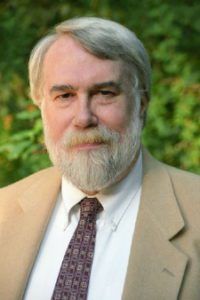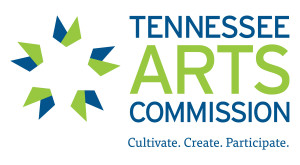At the Schermerhorn and then Rudy’s: A Saturday Night Out in Music City
On April 13, on a day where the rain just wouldn’t seem to stop, the Nashville Symphony presented a concert which featured Pyotr Ilyich Tchaikovsky’s epic Fourth Symphony “Fate” Opus 36 as well as two pieces by Maryland-born composer Christopher Rouse-Supplica and his Concerto for Orchestra. The Rouse pieces were recorded for a forthcoming release by the Nashville Symphony.
The evening opened with Rouse’s Supplica. Written in 2013, it is a single movement lyrical work which seeks to convey the “intensity of a prayerful plea.” The work is programmatic (and sounds like it), but conveys a meaning for the composer which he states “must remain personal.” In that way, and in the way that Rouse creates a world within the movement, Supplica is written in a remarkably Mahlerian language. Although the orchestra is pared down to horns, brass, harp and strings (lacking woodwinds in particular) it is remarkably lyric with explosive moments of dissonance. Here Nashville’s string section were brought into the highlight and they didn’t disappoint, expressing Rouse’s visceral longing with an eloquent and sensitive phrasing.

But if Supplica represented a kind of etude on musical virtuosity, Rouse’s Concerto for Orchestra brought the technical virtuosity of the entire band to the forefront. This piece is constructed in two halves, with the first filling a kind of “ababa” form that balances great and explosive rhythmic sections with intimate, emotional interludes. The second half is related, but in two parts leading to what Rouse called a “frenzied, almost hysterical, climax.” Certainly, the piece put the orchestra through their paces and what emerged was a fantastic rendition of an extraordinarily difficult piece. To mention any one section by name would be ludicrous, each instrumental section was tested in its own way. In all I anxiously await the recording, not only to document the performance, but also to demonstrate what a superior band we have here in Music City. It was quite nice to see the composer take to the stage and accept his applause. Rouse offered a remarkable thanks Maestro Guerrero in an interview before the concert (located on youtube) in which he remarked on the role and impact that the Symphony has had in championing living American composers;
Speaking for many composers, we are so grateful to you and this terrific orchestra, for having the commitment, not just to perform the music but to record it as well so that it is disseminated beyond just the live concert hall experience. It’s something that we have enormous gratitude for.
After intermission the orchestra returned to the 19th century with Tchaikovsky’s Fourth Symphony. Written just after his brief and tragic marriage, Tchaikovsky dedicated it to his patroness, Nadezhda von Meck, who he saw as an artistic inspiration for the work, and to whom he gave an extensive description of its program. The symphony opens with a great fanfare for horns, played with brilliance in Nashville. The fanfare returns as a kind of structural articulation that represents, in the composer’s words, “Fate, the fatal power that hinders one in the pursuit of happiness from gaining the goal, which jealously provides that peace and comfort do not prevail, [….] This might is overpowering and invincible. There is nothing to do but to submit and vainly complain.” Indeed, the entire movement proceeds along these lines with a great contrast between hopeful lyrical moments and this crushing fanfare.
Guerrero brought the contrasts out sharply. Special mention goes to the Principle Oboist Titus Underwood for the melody that marks this dreamlike second movement. The third movement is a Scherzo that seems to pay tribute to Mendelsohn; it is a tour-de-force of light fast moving string pizzicato reminiscent of Mendelssohn’s fairy music, played with remarkable precision by Concertmaster Jun Iwasaki and the rest of the strings. The work then proceeded, despite a return of the “fateful fanfare,” to an exciting conclusion that brought the room to its feet. Overall the concert was a beautiful but heavy, emotional evening, and upon leaving, I decided to stop off at Rudy’s Jazz Room to catch some jazz before heading home.
 I arrived at Rudy’s just in time to catch the back end of the Jody Nardone trio’s set. Nardone is a fine pianist and tremendous vocalist. The ensemble covered Soundgarden’s Black Hole Sun, with an innovative approach that seemed to replace the grunge rock anthem’s volume and distortion with advanced harmonies and introspection. A fusion that made the song anew even as it carried the same expressive goals with gripping precision. After the set, Nardone gave me a copy of his 2013 release Lights Will Guide You Home whose title he took from the opening ballad “Fix You” by popular rock artist Coldplay. It is littered with these beautiful covers of deep tracks in popular music.
I arrived at Rudy’s just in time to catch the back end of the Jody Nardone trio’s set. Nardone is a fine pianist and tremendous vocalist. The ensemble covered Soundgarden’s Black Hole Sun, with an innovative approach that seemed to replace the grunge rock anthem’s volume and distortion with advanced harmonies and introspection. A fusion that made the song anew even as it carried the same expressive goals with gripping precision. After the set, Nardone gave me a copy of his 2013 release Lights Will Guide You Home whose title he took from the opening ballad “Fix You” by popular rock artist Coldplay. It is littered with these beautiful covers of deep tracks in popular music.
At 11:30 the Geoff Pfeifer Quartet came onstage and performed a harder Jazz, opening with

Wayne Shorter’s “Fee Fi Fo Fum” and then “Stella by Starlight,” with a brisk fluency that was refreshing and quite exciting–a New York, even Bebop-informed, jazz in Music City. In a night of stark contrasts I shouldn’t have expected anything more. Unfortunately, life had plans for me early the next morning so I had to depart ‘round midnight. So much music here in the city, so little time.
- About the Author
- Latest Posts
Joseph E. Morgan is a father of two, husband, teacher and recovering guitarist in Middle Tennessee.



